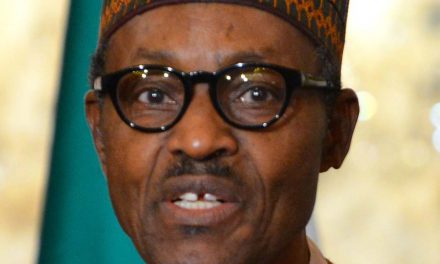It is no secret that Africa is facing a climate conundrum. At the core of this trilemma is the question of how the continent can balance the energy access required for development with climate mitigation and deal with the inevitable impacts. The prevailing sentiment is that getting Africa to conform and comply with new global standards is unfair and prejudicial. Yet at the same time, Africa is disproportionately affected by climate change because it doesn’t have the social and economic buffers to mitigate its effects.
Indeed, Africa’s challenge is unique. Collectively, the continent contributes the least emissions, but suffers a disproportionate weight of the consequences. According to studies, climate change could wipe out 15% of Africa’s gross domestic product by 2030. This means an additional 100 million people in extreme poverty by the end of the decade. In addition to food insecurity, population displacement and water scarcity, more than half of African countries are likely to experience conflicts related to the climate crisis.

A young man carries electronic waste at a dumpsite in Accra, Ghana. The dump site is located in Agbogbloshie slum, a former wetland in the 60s and the home of refugees who fled the conflict in the north of Ghana during the 80s. Photo: Cristina Aldehuela/AFP
Optimistically viewed, green industrialisation presents a major opportunity for African countries to “leapfrog” the fossil-fuel based growth strategies of developed countries, instead charting sustainable growth paths to a healthier, more prosperous future. More pessimistically, the increase in cyclones, droughts, fires, flooding and rising sea levels threatens to exacerbate already acute poverty on a lagging continent. In reality, both scenarios are likely to play out simultaneously, raising questions about how to manage the distributional effects of these twin forces.
In this context, climate diplomacy has assumed centre stage. Policymakers must now strike a delicate balancing act between the moral imperatives of economic justice and human rights, and the stark reality of environmental impacts and economic sustainability. Ahead of COP26 in Glasgow, African policymakers had sought to concentrate their collective agenda around three key issues – framing, fairness, and financing.
The first aspect to acknowledge is that the nature of the challenge is vastly different in Africa, vis a vis the Global North. There is a tendency, especially in western public discourse, to adopt a one size fits all approach to climate change, but this cannot and should not be the case. Indeed, Africa’s demands, needs, and path to net zero diverge significantly from those of countries in the Global North, and for good reason. Shoe-horning developed world policy imperatives onto Africa is neither helpful nor credible because it doesn’t adequately contextualise the problem. Africa has unique circumstances and severe capacity constraints. Constructive solutions require a nuanced framing of the problems to ensure that they are both sustainable and fit for purpose.
There are a few dimensions to this. Fundamentally, the debate is not about energy transition but about energy access. Africa is energy poor – 1.1 billion sub-Saharan Africans share the same amount of power generation capacity as Germany’s 83 million people. Therefore, there can be no transition when there is no access.
For the most part, oil, gas, and coal – fossil fuels – currently represent the cheapest and most accessible sources of energy, as well as the dominant source of export earnings in most African countries. On a continent where nearly 600 million people lack access to grid electricity and where sub-Saharan Africa produces, on average, only 0.8 tonnes of CO2 per person per year, compared to a global average of 4.8 tonnes, there must be a recognition that the rules for Africa need to be different.
Second, in the West, where coal has become taboo, the same stigma does not resonate in Africa. Rather than being a binary choice between fossil fuels and renewables, for Africa the solution needs to achieve a strategic mix, with a place for both old and new energy sources – largely because it doesn’t have the money, existing infrastructure or technology to do otherwise. Such considerations inform the continent’s negotiating position, much to the chagrin of many of its industrialised peers. This hybrid approach, which allows for a transitory role for fossil fuels, needs to be recognised as a core feature of any workable/sustainable solution.

A young Ethiopian girl takes part in a national tree-planting drive in the capital Addis Ababa. Photo: Michael Tewelde/AFP
Lastly, the continent should prioritise climate adaptation rather than mitigation, given its developmental imperatives. That is not to say that African countries cannot and should not make the necessary shifts to clean and green energy sources – in fact they would be naïve not to, given the evolving supply and demand dynamics and the rapid energy consumption shifts by its key trading partners.
Looking ahead, unless such changes are made smartly and at the correct pace, some of the continent’s key job-creating industries could be crippled, while countries are left with huge unrealised natural endowments. This is where the idea of a “just” energy transition – one that leaves no one behind – becomes relevant and important. Maintaining economic growth while minimising carbon dioxide emissions will require applying newer carbon-efficient technologies alongside existing energy production systems. To this end, the ideal state would not be to provide access and then have to transition – it would be to provide access once and for all by doing it via the optimum mix that balances speed, scale, cost and emissions of the power mix. But to facilitate this, both carrots and sticks are required, to ensure that behavioural shifts are accompanied by the correct financial incentives. Importantly, this needs to be done on terms that are favourable to the continent, rather than those that are dictated to it by external parties.
This speaks to the second theme – fairness. As Gyude Moore of the Centre for Global Development argued in a recent piece for Africa Business Magazine, Africa cannot be the sacrificial lamb for the West’s transition to net zero. The continent is not industrialised and to force it to do so without using its natural endowments is to effectively consign it to perpetual poverty.
Since the climate problem was largely created by Europe, North America, and east Asia, it naturally follows that they should pay for the cost of the transition. However, rich nations have not come to the party in this regard, with financing commitments falling well short of agreed targets. This was again evident at COP26, where finance was a highly contentious issue.
Against this backdrop, it would therefore be morally unjust to impose onerous demands for clean growth on a continent that is already trying to develop under unique circumstances – namely having to democratise and industrialise simultaneously, while facing the threat of premature deindustrialisation, all while struggling through an unprecedented pandemic.
This is even more egregious since the rest of the world has had the benefit of centuries of emissions without restrictions. Therefore, any notion of a “just” transition takes on a very different meaning in Africa, where both geographic (from coal producing regions to renewable regions) and industry redistribution (from fossil fuels to other industries) is necessary. It is for this reason that Africa’s leaders are adamant that the continent’s transition needs to be tailored to the unique set of circumstances it faces.
This leads to arguably the most controversial question – who will bear the cost? African countries have little to no fiscal room, and their positions have worsened in the aftermath of COVID-19. According to a recent study by the United Nations Economic Commission for Africa, Cameroon devotes close to 9% of its GDP to climate adaptation, Ethiopia 8%, Zimbabwe 9%, while Sierra Leone, Senegal and Ghana are all at more than 7%. Even with these high shares of domestic funding, the study found a gap of about 80% between need and expenditure.
Therefore, logic dictates that the world’s largest emitters need to fund the cost of transition. But in very crude terms, finding alignment on this matter will depend solely on the size of the industrialised world’s aid to the continent. This differentiated approach to the transition has been advocated by the developing world and championed by the African bloc. Unsurprisingly, the response has been lukewarm.
Yet there are still some reasons for cheer. South Africa, which has received $8.5 billion in grants and concessional loans for the next five years under the “Just Energy Transition Partnership”, offers a compelling example of an emerging market financing model that might work. This was a unique deal struck between South Africa and a club of developed-country donors – announced during COP26 – to accelerate the decarbonisation of Africa’s most industrialised economy.
Nicholas Kumleben, in a piece for Foreign Affairs, notes three standout features of the deal that have generated excitement. First, its bespoke nature – the deal was recipient led and designed (thus catering to local conditions and contexts); second, it was a small partnership which – in theory- ensures greater accountability and transparency; and third, it provided funding at a local level, which mitigates some of the impact of deindustrialisation. Although the proof will be in the proverbial pudding, such agreements are likely to become more common as global political and economic pressures to decarbonise intensify.
While such financing arrangements are welcome, they will need to be scaled. Moreover, as Tanguy Gahouma-Bekale, the Chair of African Group of Negotiators on Climate Change notes, this alone is insufficient. The continent needs grants, not just loans, for the impact to be meaningful.
The role of global private capital flows will also be a compelling force to watch, as they are arguably more important than the international treaties agreed at places such as COP26. The pressures placed by private capital on banks, asset managers and sovereigns to transition may ultimately be too big to ignore, accelerating such shifts.
For their part, several African governments have displayed a willingness to embrace a green future and use it to “leapfrog”. Through the African Green Stimulus Programme, Renewable Energy Initiative and the Africa Adaptation Initiative they are attempting to court investments in new sectors.
Amongst the countries that stand out are Namibia and Gabon, both of whom are attempting to position themselves as new energy hubs. Namibia has plans to become a world leader in hydrogen and has placed the green and blue economies at the centre of its diversification strategy. The country aims to reduce its emissions by 91% before the end of this decade, but the estimated investment required to achieve this target is about $5.3 billion, 10% of which would have to be unconditional finance.
As an economy that is heavily reliant on the agricultural sector and used to recurrent droughts, Namibia is under no illusion about the urgent need to re-engineer its economic structure. Meanwhile, Gabon plans to become a green superpower by harnessing its rainforest as an engine of economic development. As a net carbon absorber, the country is hoping to capitalise on this advantage – dubbed “natural capital” – with a novel financial product, a bond whose underlying asset is this rainforest. The value isn’t in timber, but rather carbon credits sold to companies that need to offset their own carbon output. This sustainable forestry approach has the potential to have a profound impact, both financially and environmentally. To this end, progress has already been made. In June 2021, Gabon became the first African country to receive payment for reducing carbon emissions.
Despite this positive momentum, significant challenges remain. In addition to execution risk, such endeavours will also require strong policy coordination to create the correct enabling environment for investment. There is also likely to be resistance from entrenched interests who are averse to change. Lastly, these deals, while promising, require a magnitude of scale to make a meaningful difference, and the outlook in this regard remains unclear.
The imperative of climate mitigation is clear. And with Africa due to bear the brunt of the climate crisis, the need to intervene is urgent. However, with the continent already facing a plethora of issues, the way this intervention is undertaken will determine whether or not climate adaptation is just one more addition to Africa’s growing list of crises, or a springboard that rapidly propels its development. Navigating this “just transition” will require skilful and nimble climate diplomacy, centred around the trifecta of issues outlined above.
To be sure, there are no simple fixes for this highly complex problem and any solution will require significant trade-offs, which include balancing short- and long-term considerations, the risks and rewards and the potential of clean energy with pitfalls of energy poverty.
Can it be done? There is simply no other choice.
Would you like to gain an understanding of your own impact on the environment? Calculate your own carbon footprint here
RONAK GOPALDAS is a director at Signal Risk, an exclusively African risk advisory firm. He was previously the head of country risk at Rand Merchant Bank (RMB) for a number of years, where he managed a team who provided the firm with in-depth analysis of economic, political, security and operational dynamics across sub-Saharan Africa. He holds a BCom degree in philosophy, politics and economics (PPE) and a BCom (Hons) from the University of Cape Town (UCT). He also has an MSc in finance (economic policy) through the School of Oriental and African Studies (SOAS) in London.[












